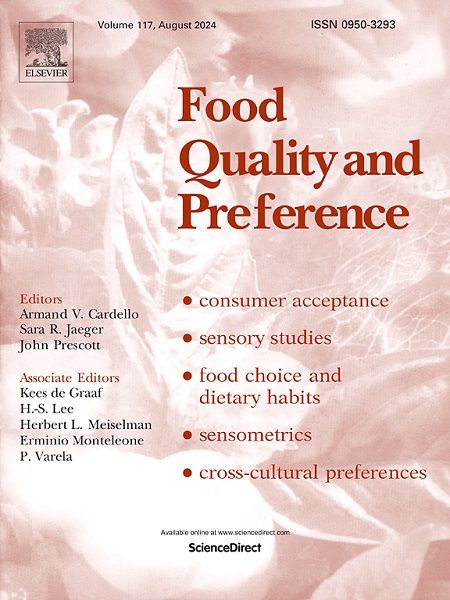Understanding the relationship between carbonation-related characteristics and sensory perception of alcoholic and non-alcoholic beers
IF 4.9
1区 农林科学
Q1 FOOD SCIENCE & TECHNOLOGY
引用次数: 0
Abstract
The mouthfeel of non-alcoholic beers is often considered inferior to that of their alcoholic counterparts. Mouthfeel is influenced, inter alia, by carbonation-related properties such as the bubble size, sting and the amount of bubbles. This study investigated differences in the carbonation-related properties of alcoholic and non-alcoholic beers and whether such differences are sensorially perceivable. Four non-alcoholic commercial beers and their alcoholic counterparts were analysed for their CO2 content on the one hand and the size and amount of bubbles formed on a nucleation line in a beer glass on the other hand. A sensory evaluation involving 20 assessors was conducted to link these carbonation-related properties to perceived mouthfeel attributes. Results show that significantly fewer bubbles formed in a glass filled with non-alcoholic than with alcoholic beer. Sensory evaluation indicated that this parameter served as a good predictor of how consumers perceived the amount of bubbles in their mouths. The bubble sizes of non-alcoholic and alcoholic beers were rather similar and no difference in bubble size between alcoholic and non-alcoholic beers could be perceived sensorially. Furthermore, no differences were observed in CO2 content between the alcoholic and non-alcoholic beers and a similar sting was perceived. These findings suggest that increasing bubble formation in non-alcoholic beers could help bridge the quality gap between alcoholic and non-alcoholic beers regarding mouthfeel.

了解碳酸相关特征与酒精和非酒精啤酒感官知觉之间的关系
不含酒精的啤酒的口感通常被认为不如含酒精的啤酒。口感受到与碳酸相关的特性的影响,例如气泡大小、刺痛感和气泡数量。本研究调查了含酒精和非含酒精啤酒碳酸相关特性的差异,以及这种差异是否在感官上可感知。研究人员分析了四种不含酒精的商业啤酒和相应的含酒精啤酒,一方面分析了它们的二氧化碳含量,另一方面分析了啤酒杯中在成核线上形成的气泡的大小和数量。一项涉及20名评估员的感官评估将这些与碳化相关的特性与感知到的口感属性联系起来。结果表明,在装满无酒精啤酒的玻璃杯中形成的气泡明显少于装满酒精啤酒的玻璃杯。感官评估表明,这个参数可以很好地预测消费者如何感知嘴里的气泡量。不含酒精的啤酒和含酒精的啤酒的气泡大小相当相似,酒精啤酒和不含酒精的啤酒的气泡大小在感官上没有差异。此外,在含酒精和不含酒精的啤酒之间,没有观察到二氧化碳含量的差异,并且感觉到类似的刺痛。这些发现表明,在不含酒精的啤酒中增加气泡的形成可以帮助弥合含酒精和不含酒精的啤酒在口感上的质量差距。
本文章由计算机程序翻译,如有差异,请以英文原文为准。
求助全文
约1分钟内获得全文
求助全文
来源期刊

Food Quality and Preference
工程技术-食品科技
CiteScore
10.40
自引率
15.10%
发文量
263
审稿时长
38 days
期刊介绍:
Food Quality and Preference is a journal devoted to sensory, consumer and behavioural research in food and non-food products. It publishes original research, critical reviews, and short communications in sensory and consumer science, and sensometrics. In addition, the journal publishes special invited issues on important timely topics and from relevant conferences. These are aimed at bridging the gap between research and application, bringing together authors and readers in consumer and market research, sensory science, sensometrics and sensory evaluation, nutrition and food choice, as well as food research, product development and sensory quality assurance. Submissions to Food Quality and Preference are limited to papers that include some form of human measurement; papers that are limited to physical/chemical measures or the routine application of sensory, consumer or econometric analysis will not be considered unless they specifically make a novel scientific contribution in line with the journal''s coverage as outlined below.
 求助内容:
求助内容: 应助结果提醒方式:
应助结果提醒方式:


